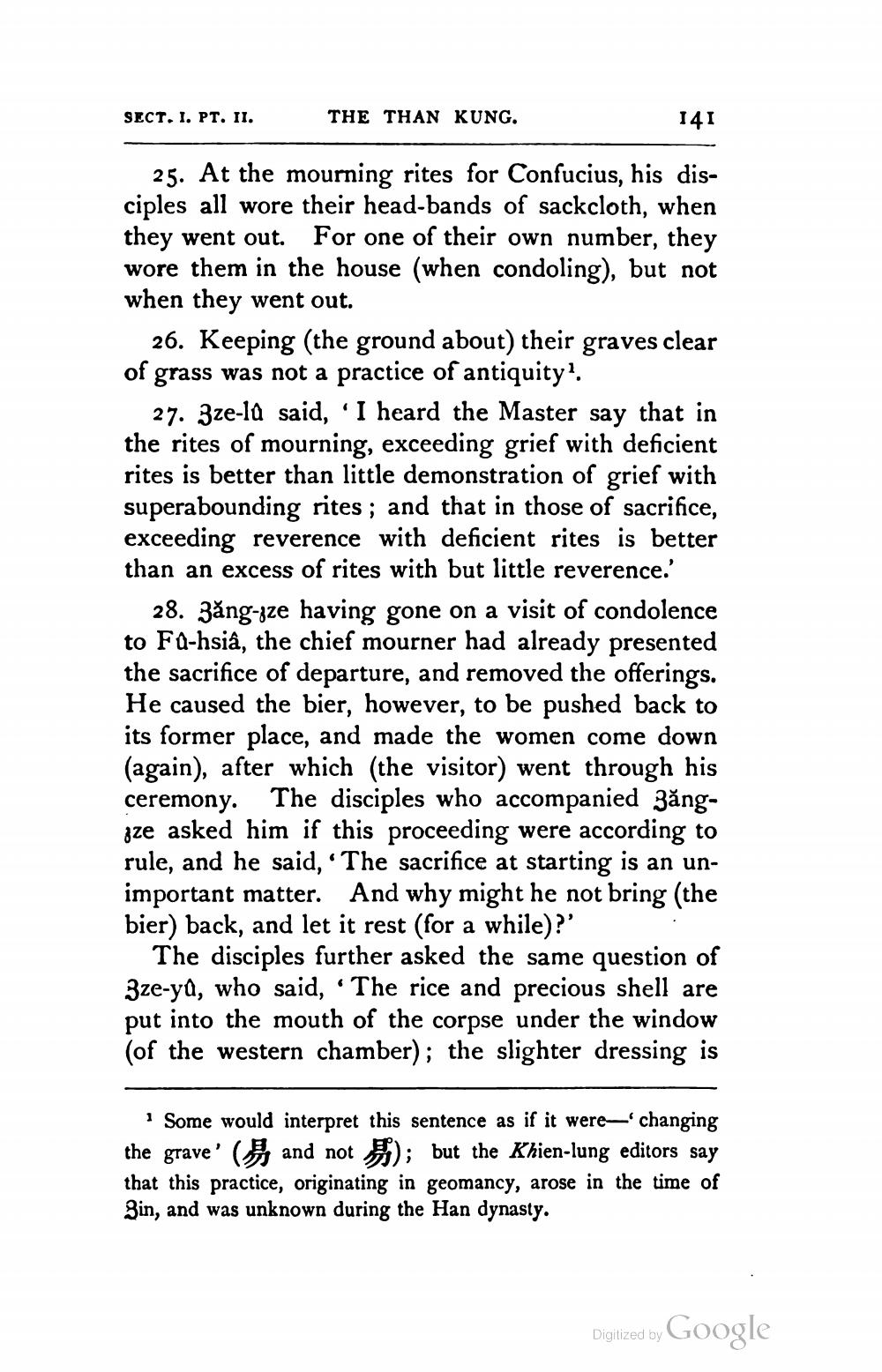________________
SECT. I. PT. II.
THE THAN KUNG.
141
25. At the mourning rites for Confucius, his disciples all wore their head-bands of sackcloth, when they went out. For one of their own number, they wore them in the house (when condoling), but not when they went out.
26. Keeping (the ground about) their graves clear of grass was not a practice of antiquity!
27. 3ze-la said, 'I heard the Master say that in the rites of mourning, exceeding grief with deficient rites is better than little demonstration of grief with superabounding rites; and that in those of sacrifice, exceeding reverence with deficient rites is better than an excess of rites with but little reverence.'
28. 3ăng-ze having gone on a visit of condolence to Fa-hsiâ, the chief mourner had already presented the sacrifice of departure, and removed the offerings. He caused the bier, however, to be pushed back to its former place, and made the women come down (again), after which (the visitor) went through his ceremony. The disciples who accompanied 3ăngzze asked him if this proceeding were according to rule, and he said, “The sacrifice at starting is an unimportant matter. And why might he not bring (the bier) back, and let it rest (for a while)?'
The disciples further asked the same question of 3ze-ya, who said, “The rice and precious shell are put into the mouth of the corpse under the window (of the western chamber); the slighter dressing is
* Some would interpret this sentence as if it were changing the grave' ( and not ); but the Khien-lung editors say that this practice, originating in geomancy, arose in the time of Zin, and was unknown during the Han dynasty.
Digitized by Google




